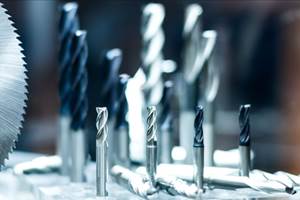Developing an In-House Training Curriculum
You’ve decided who you’re going to train. You’ve assessed your CNC operator needs. Now it’s time to figure out exactly what content you’re going to teach.
Share




Hwacheon Machinery America, Inc.
Featured Content
View More


With a list of tasks for students to master during your in-house training (your expectations), you must now come up with learning methods and content to address this list (your curriculum). The more you target your company’s own specific needs, the more focused your curriculum will be. Many approaches are available, and opinions vary as to which method is best. Pick an approach that accomplishes your goals while staying within your time and cost budgets.
Pre-developed Vs. Your Own Material
Several companies provide CNC training in a variety of formats, including online classes, CD-ROM courses and self-study manuals. These training options tend to be somewhat generic, encompassing what the curriculum-providing company sees as general CNC machine tool usage. They may cover universal CNC topics pretty well, but will not address needs that are specific to your company. At the very least, you will probably have to add content to ensure that all of your company’s special needs are met.
You may additionally find that pre-developed CNC courses contain content that is not needed in or appropriate for your company. This means you will have to sift through the course content and choose just what you want your people to study.
The alternative, of course, is to develop your own content. While this requires more time, it will allow you to more easily target those tasks you need your people to learn. Additionally, you can use your own words and the specific product-related terminology that is currently being used by your staff.
An often appropriate solution is to incorporate both methods. Pick and choose content from a pre-developed course and supplement it with content of your own. This should minimize the time you will have to spend on course development and training while ensuring that all important topics are well-covered. The concern here is that you may come up with a disjointed curriculum. Since students will be learning from multiple sources, content may not nicely flow from one topic to the next.
Regardless of how you come up with your curriculum, you must complete the assessment process described in last month’s CNC Tech Talk column. Doing so ensures your curriculum addresses all of your training issues.
Self-paced vs. instructor-led training
The “instructor” or facilitator that you ultimately choose for a CNC class probably has additional responsibilities. Indeed, a person with enough experience to teach CNC usually occupies a pretty important company role. This person may have limited time to develop a curriculum or to train new people, and/or they may even lack the desire to do so.
If the instructor is, in fact, too busy to develop the curriculum or teach, the only alternative may be to take advantage of self-paced, pre-developed CNC courses. In this type of program, students will learn on their own, only communicating with the instructor when they have questions.
I believe that all CNC training should include at least some instructor-led sessions. At the very least, there should be a review of content presented in the pre-developed, self-paced course to confirm that the students truly understand the material. This also gives students the opportunity to ask questions. Additionally, instructor-led content should include company-specific topics that are not included in a pre-developed course.
Developing Content
Curriculum materials should include study and evaluation methods. Study-method examples include presentations (such as lectures incorporating PowerPoint presentations), videos, reading materials and projects. Evaluation-method examples include tests, practical exercises, projects and, of course, on-the-job performance.
If you are new to curriculum development, you can find countless suggestions online. Entering search criteria like “how to develop a curriculum,” will produce many helpful links. Don’t expect your first attempts at curriculum development to be as attractive or effective as professionally developed content, but with appropriate delivery effort on your part, you should be able to get your points across to your students.
This is one reason why it is so important to choose the right candidates in the first place. Dependable and highly motivated, good learners can make even an entry-level instructor look good. If you match these traits as an instructor, training is bound to succeed.
Related Content
Building Machines and Apprenticeships In-House: 5-Axis Live
Universal machines were the main draw of Grob’s 5-Axis Live — though the company’s apprenticeship and support proved equally impressive.
Read MoreSolve Worker Shortages With ACE Workforce Development
The America’s Cutting Edge (ACE) program is addressing the current shortage in trained and available workers by offering no-cost online and in-person training opportunities in CNC machining and metrology.
Read MoreAddressing the Manufacturing Labor Shortage Needs to Start Here
Student-run businesses focused on technical training for the trades are taking root across the U.S. Can we — should we — leverage their regional successes into a nationwide platform?
Read MoreHow to Pass the Job Interview as an Employer
Job interviews are a two-way street. Follow these tips to make a good impression on your potential future workforce.
Read MoreRead Next
Building Out a Foundation for Student Machinists
Autodesk and Haas have teamed up to produce an introductory course for students that covers the basics of CAD, CAM and CNC while providing them with a portfolio part.
Read MoreRegistration Now Open for the Precision Machining Technology Show (PMTS) 2025
The precision machining industry’s premier event returns to Cleveland, OH, April 1-3.
Read More5 Rules of Thumb for Buying CNC Machine Tools
Use these tips to carefully plan your machine tool purchases and to avoid regretting your decision later.
Read More
.jpg;width=70;height=70;mode=crop)

.png;maxWidth=150)











































